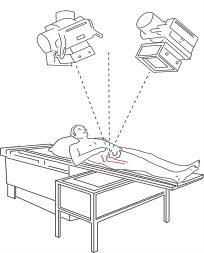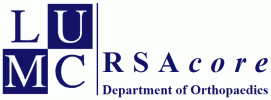About RSA
 Aseptic mechanical loosening is the major factor for prosthesis failure. This loosening starts with progressive migration of 0.2 - 1.0 mm of the prosthesis. Early migration can be detected accurately with RSA making evaluation of new prosthesis design or different fixation techniques is possible in small patient groups. Publications have shown that the 2-year migration results have a predictive value for early prosthesis failure.
Aseptic mechanical loosening is the major factor for prosthesis failure. This loosening starts with progressive migration of 0.2 - 1.0 mm of the prosthesis. Early migration can be detected accurately with RSA making evaluation of new prosthesis design or different fixation techniques is possible in small patient groups. Publications have shown that the 2-year migration results have a predictive value for early prosthesis failure.
Tantalum markers inserted in the bone during surgery form a rigid body that serves as the reference to which the migration of the prosthesis is calculated.
Two roentgen images are made simultaneously while the patient is positioned over a calibration box. The calibration box defines the 3D position of the roentgen sources and it calibrates the entire setup.
Model-based RSA software detects marker projections and prosthesis contours automatically. When several follow-up moments are analyzed, the migration of the prosthesis with respect to the bone can be calculated with sub-millimeter accuracy.
